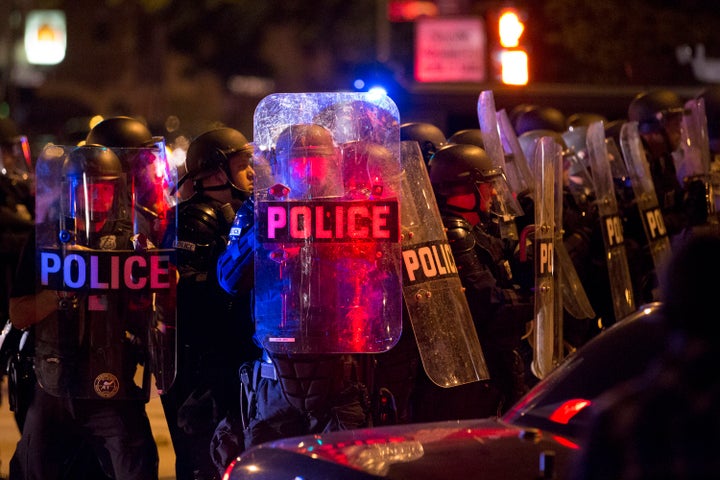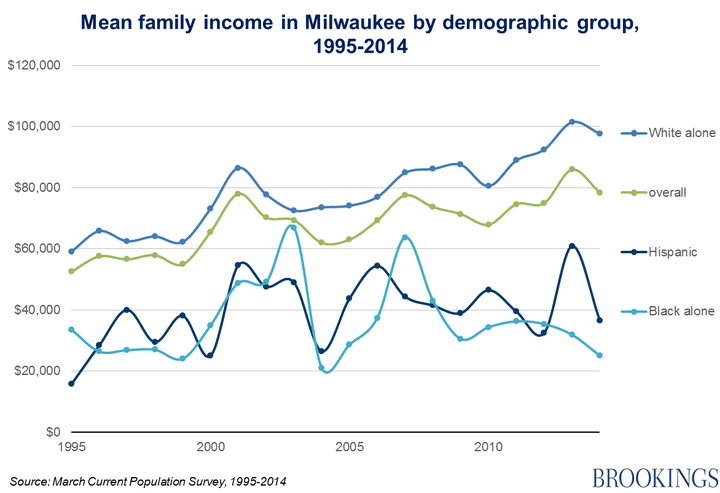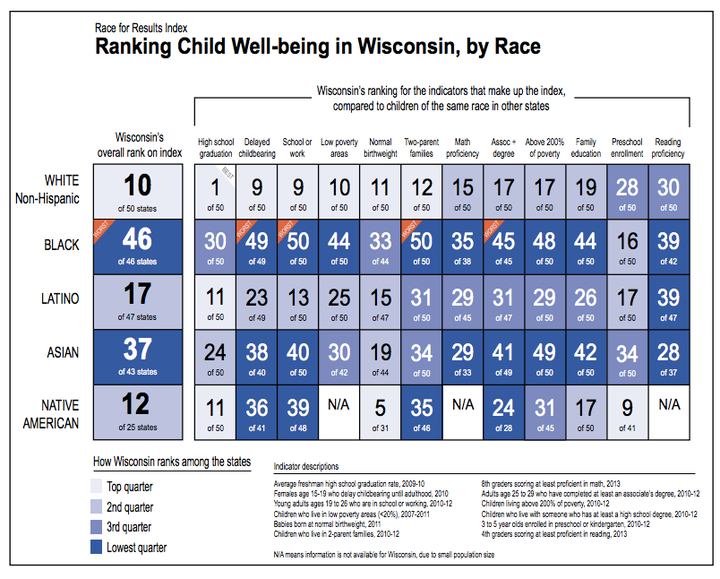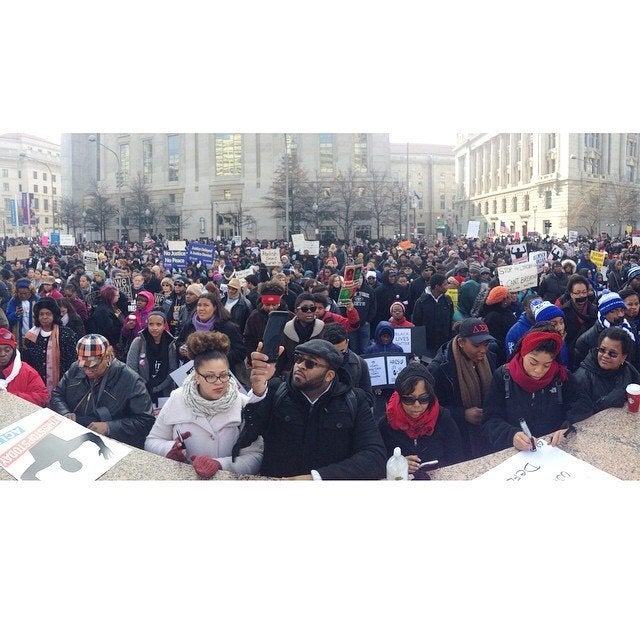CaIm has been mostly restored to many parts of Milwaukee since the police killing of Sylville Smith on Saturday led to violent protests, but the frustration over the poor treatment of black lives lingers.
The Milwaukee police officer, whose name has not yet been released, told the city’s police chief he shot Smith seconds after Smith fled from a traffic stop. Smith, who was black, was armed and had a history of criminal offenses, but community members say that didn’t justify his killing.
Protesters, most of them black, took to the streets for three consecutive days to demonstrate their anger against the police. In the city’s northern neighborhood of Sherman Park, protesters vandalized and burned buildings; there were multiple reports of gunshots throughout the area and dozens of people were arrested. Gov. Scott Walker activated the National Guard in case city police needed help restoring order, but they weren’t ultimately deployed.
“Sylville’s death did not come as a surprise, just a wave of sadness,” Miela Fetaw, a 21-year-old resident of Milwaukee, told The Huffington Post. “I have never seen this community so unapologetic in their anger, in their frustration, in their loss of a brother.”
The disturbances were not just about Smith’s shooting, said Milwaukee NAACP branch president Fred Royal. African Americans, who make up about 40 percent of the city, have higher levels of unemployment, higher incarceration rates and lower incomes than the white population. The recent upheaval may force city residents to have a long overdue reckoning about inequality, he said.
“Institutional racism creates these problems,” Royal said, adding, “When you have systems in place that have been used for their privilege for years and have failed to meet the needs of another community, it may be that they will only identify with that type of outcry.”
The institutional racism Wisconsin upholds has created deep divisions between its residents, and many of the state’s black men and women have felt marginalized and mistreated for too long.
“The people are not heard,” Fetaw said. “Their pain is not acknowledged.”
Wisconsin ranks as the worst state for black Americans, according to a special report from financial website 24/7 Wall St. For many of Wisconsin’s black residents, this news may be unsurprising; for others, perhaps confusing. Here are a few reasons to help explain why black lives don’t seem to matter very much to the state of Wisconsin.
Prisons and jails get more money than schools.

Before Smith’s killing, Milwaukee residents were wary of the city’s police force. They still have fresh memories of the scandal that led the Milwaukee Common Council in January to approve a $5 million settlement with 74 black people who said they were illegally strip-searched.
That came after outrage over the 2014 police killing of 31-year-old Dontre Hamilton, an unarmed black man who suffered from schizophrenia and had been sleeping in a park. White police officer Christopher Manney shot Hamilton 14 times after Hamilton allegedly grabbed for the officer’s baton. Manney got fired, but no charges were filed against him.
But law enforcement has a big impact on the lives of black Milwaukee residents beyond the extreme incidents. More than half of black men in the city in their 30s have been incarcerated, according to a 2013 University of Wisconsin-Milwaukee study. Police have disproportionately arrested black men for marijuana possession and disproportionately made traffic stops against black residents.
Wisconsin overall incarcerates African American people at the highest rate of any state and spends more on jails and prisons than on schools. The state’s 2013-2015 budget set aside 7 percent more funding for the correctional system than the 2003-2005 budget, while funding for public schools and the university system dropped by 14 percent and 21 percent respectively in that time period, according to the Wisconsin Budget Project.
“There has been this festering of the division of the police and the community,” said Royal, the NAACP branch president.
But there are some positive signs. After Manney was fired, Police Chief Edward Flynn sought to work with the federal Department of Justice to reform the city’s police force, and the DOJ has begun what is typically a two-year process of identifying systemic policing problems and monitoring recommended changes. Cops have also exhibited restraint during the recent days of upheaval, Royal said.
Milwaukee is the most segregated city in the country.
The last time the city’s tensions exploded on this scale was in 1967, when racial rioting led to three deaths and more than 1,700 arrests. One of the causes historians cite was a battle over a proposed local fair housing law to protect minorities.
To this day, Milwaukee remains racially divided. The city has the dubious distinction of being the most segregated city in America, according to census data compiled by the Brookings Institution this year. It’s a title the city has earned before in other studies.
The Brookings report looked at census tracts dominated by one demographic group and concluded that 78 percent of blacks or 78 percent of other residents would have to relocate to new neighborhoods to create a balanced city.
The city’s north side is the historically African-American district and the site of much of the recent unrest. By being concentrated in the urban center, black residents find it tougher to get to jobs, partly due to a lack of public transportation. The issue isn’t as prevalent for white people in the area who have migrated to the suburbs, where job growth is higher.
The economic landscape is bleak.
The economic disparities between black and white Milwaukee residents is severe and has been for decades. The unemployment gap is bigger here than in 70 other metro areas, according to a National Urban League report from May that analyzed data from 2015. Only 4.3 percent of whites were unemployed, compared to 17.3 percent of blacks, the study found.
Even when African Americans find employment, they earn much less than white workers. Black Milwaukee residents have an average household income of $25,600, compared to $62,600 for their white counterparts, the report found. The income of African Americans in the city also lags behind African Americans who live elsewhere, according to the 24/7 Wall Street report.

Manufacturing was an important industry that bolstered employment and income for African Americans in the city in the 1970s. Those jobs have dried up, Royal said, while black workers have not gained access to jobs in stronger industries like construction and health care.
Wisconsin’s education system is significantly unequal.
Schools throughout the state are hyper-segregated and black students are among the lowest performers. According to a study conducted by Wisconsin’s Council on Children and Families, black students rank lowest in every measure that factors into a child’s well-being in the state, including math and reading proficiency, family poverty levels and high school graduation rates. The chart below displays the haunting data:

There are many factors that contribute to the wide achievement gap between black and white students. Ken Taylor, the executive director of the council and the author of the report, says one significant reason is the state’s inadequate funding of its education system.
“I think that one of the big issues is disinvestment in public education, and there are a lot of factors to that as well,” Taylor told HuffPost. “Part of it has to do with the oldest voucher experiment, which was an attempt to really insert competition to the public school system, and it’s been a bit of a wash.”
Wisconsin’s voucher program allows for students from low-income families to attend better-quality schools. However, recent data shows that the program, at least in Milwaukee, is failing minority students who are attending schools that are riddled with educational inequality.
High school suspension rates throughout the state also disproportionately affect black students. In fact, black high schoolers in Wisconsin are suspended at the highest rate in the country, and in Milwaukee, the rate is nearly double the national average, according to research by UCLA.
“We need a sense of urgency and balance along with a sustained long-term commitment,” Taylor said, focusing on potential solutions to bring about change throughout the state. “None of these things happened overnight, so we do need a sense of urgency to change them, but we need to be in this for the long haul and have cross-racial, cross-cultural, cross-economic collaboration.”
